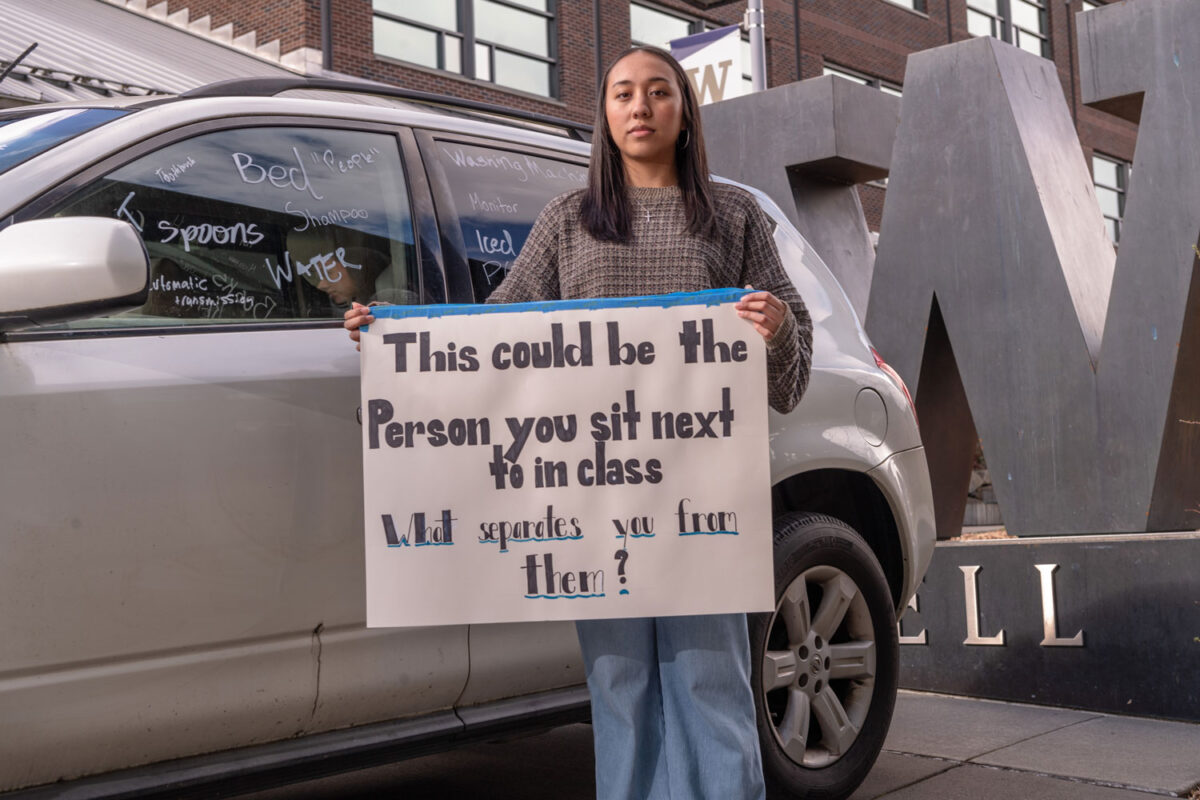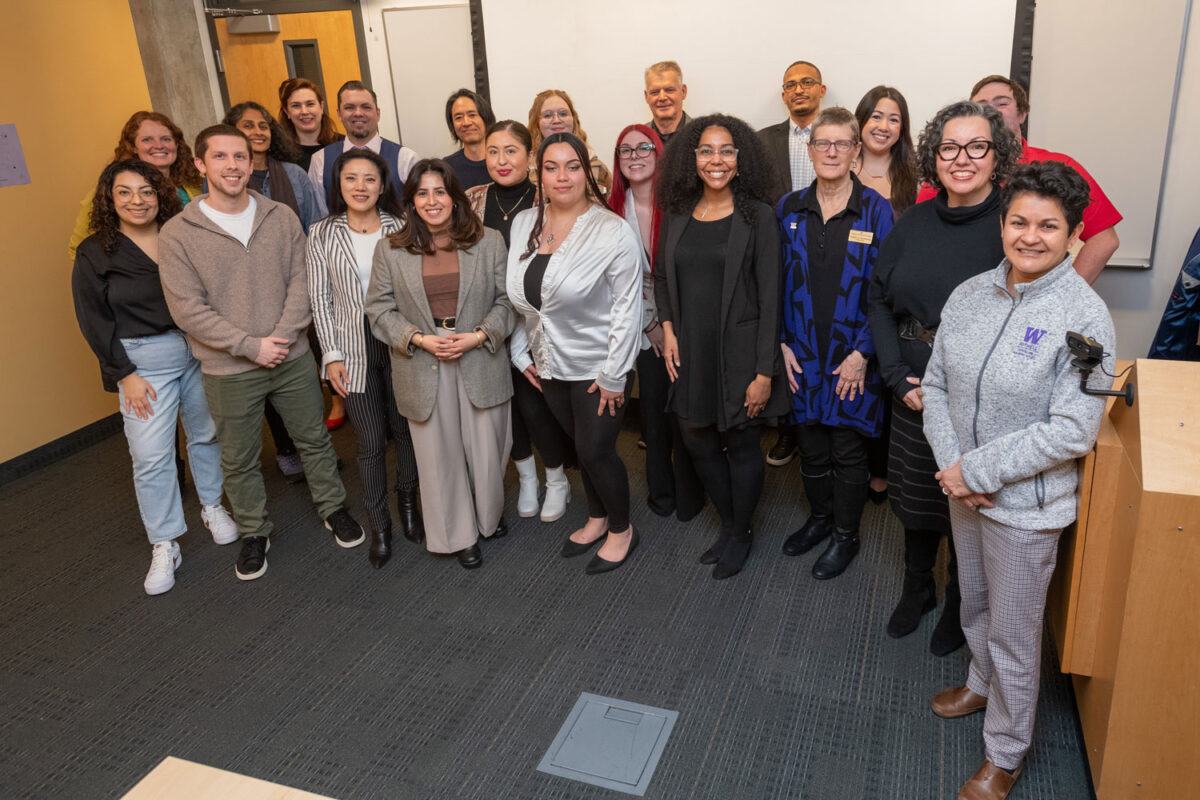What if something wonderful happens?
That is the question at the core of a class at the University of Washington Bothell that examines the powerful potential of the arts. According to Gary Carpenter, lecturer in the School of Interdisciplinary Arts & Sciences, the arts are often thought of as entertainment or as merely decorative when, in reality, they can help form our individual and community identities.
The arts also can influence how we navigate basic decisions as well as the most complex issues of our times. Indeed, the arts are foundational to most grassroots efforts to create social change, too.
“In many arts courses, it’s not the technique or specific skills students learn that are important but how students leverage the arts in general into their personal and professional lives,” Carpenter said. “The arts enable us to navigate new ideas or old ideas in new ways and find common ground — and their transformational abilities are needed more today than ever.”
A project with a purpose
Students in Carpenter’s “What if Something Wonderful Happens? The Powerful Potential of the Arts” course gathered into small groups to select social issues that mattered to them and then create related art projects on campus. With specific social-change outcomes in mind, they learned the ins and outs of project design, from initial conception to the more practical aspects of implementation.
Dylan Brand, Raj Dhoot, Logan Gray and Katelyn Revilla centered their project around the topic of homelessness. “We see homeless people on our way to school and just driving around in general,” said Brand, a sophomore majoring in Business. “It has become a real concern, with more than half a million people living without a home in the United States alone.”
Brand explained that knowing just how many people are suffering is not only a source of anxiety for him and his classmates but also a space of deep sadness. “Sometimes people will stop to give them money out of pity,” he said, “but rarely do people stop and take the time to get to know them or hear their story. I feel like that lack of interaction is really dehumanizing.
“We thought this topic would be great to examine from the perspective of ‘what if something wonderful happens’ because there is so much struggle and grief in homelessness that we tend to shy away from thinking about it at all.”
Brand said that the design project he and his teammates created was meant to inspire awareness and concern in fellow students and perhaps, as a result, even make a difference for those who are homeless.
“We hope that our art installation can bring a little bit of something wonderful to the homeless population — even if it’s just a smile or a meaningful conversation from a stranger — because they are people, just like you and me, and are deserving of respect.”
We hope that our art installation can bring a little bit of something wonderful to the homeless population — even if it’s just a smile or a meaningful conversation from a stranger.
Dylan Brand, sophomore, Business
Preparation behind the piece
The students spent the first part of the winter quarter class researching their chosen topic.
“It was important for us to understand the issue on a deep level if we were to portray it accurately,” said Revilla, a first-year student. “I’m glad we did because we learned a lot. At the beginning, for example, we thought we would be able to describe an average day of a homeless person, but after our research we realized that there is no ‘average day’ nor is there an ‘average homeless person.’ The experiences of a single white male are profoundly different from those of a female, or a single mother, or a veteran.”
Brand added, “We were also surprised to learn that many homeless people have jobs. Different studies show different figures, but one survey in California found that about 13% of the homeless population in that state works full time. They just don’t earn enough to afford rent.”
The students wrote about these newfound realizations in a report that detailed the struggles homeless people face daily — including difficulties finding a meal or shelter, the dangers of living on the streets, the stigma, and the lack of sanitation and health care services.
“Only after this was complete,” Revilla said, “did we finally feel ready to embark on our installation, The Compassion Project.”
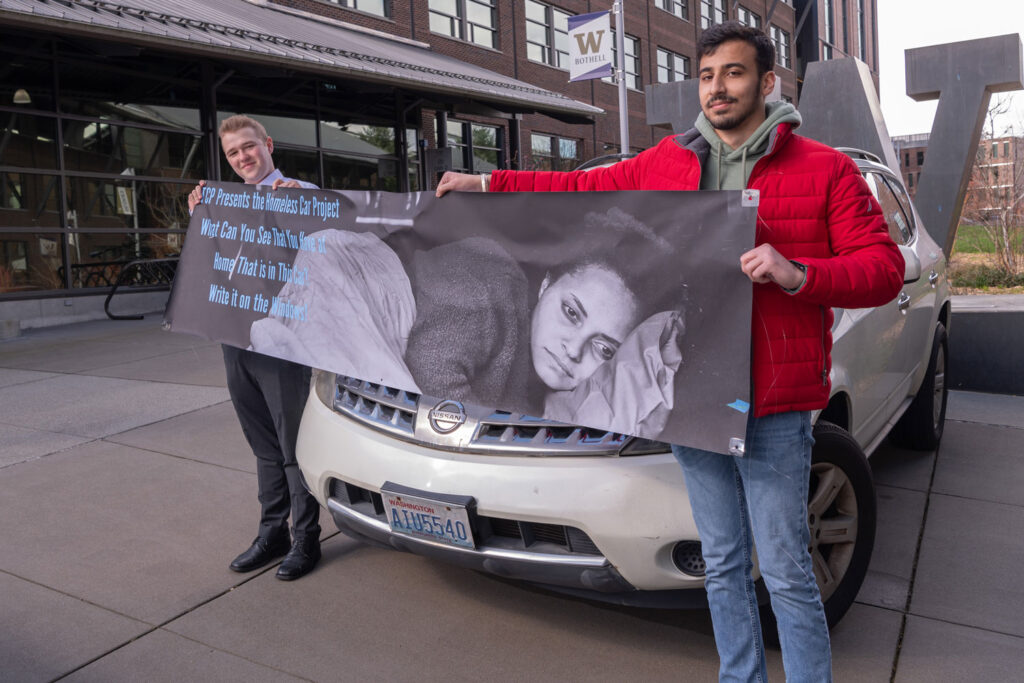
An exercise in empathy
The group chose to depict the issues of homelessness using a car loaded with the bare necessities people need in a home, an all-too familiar sight on some side streets and even along highways in the greater Seattle area. They parked the car on the campus Plaza, leaving the doors, windows and trunk open so passers-by could easily see the water bottles, blankets, clothes and minimal personal care items that were scattered inside.
“We wanted people to be confronted with a reality that was outside of their own and to interact with that reality, too,” Revilla said.
Other students, staff and faculty were encouraged to stop, sit inside and immerse themselves in the vehicle. “We asked people to look, smell and touch,” said Gray, a junior majoring in Geology. “We wanted them to feel, for the time that they were inside the car, that this was their home and the sum of all their belongings.”
The students on the project team then asked participants to write somewhere on the car (with car-safe window chalk) one item that they did not see in the car but that they live with every day.
“We got this idea after learning about artist Candy Chang in class,” said Dhoot, a first-year student planning to major in Mechanical Engineering. “Her practice includes installations that collect thousands of handwritten reflections from the public. We were really inspired by that, so we created this exercise to call out the things we take for granted — the little luxuries we live with that we forget to be appreciative of.”
Among the responses were cable outlets, Wi-Fi, running water, a microwave, refrigerator, a mattress and television. “Reading what people wrote was a big reminder of just how fortunate I am, as I have access to all of those things,” Brand said. “I not only live in a house, but I am in college and am lucky enough to have my parents supporting me financially while I obtain my degree. Because of that I get to plan my future, instead of worry about my present — and that is a gift not everyone has.”
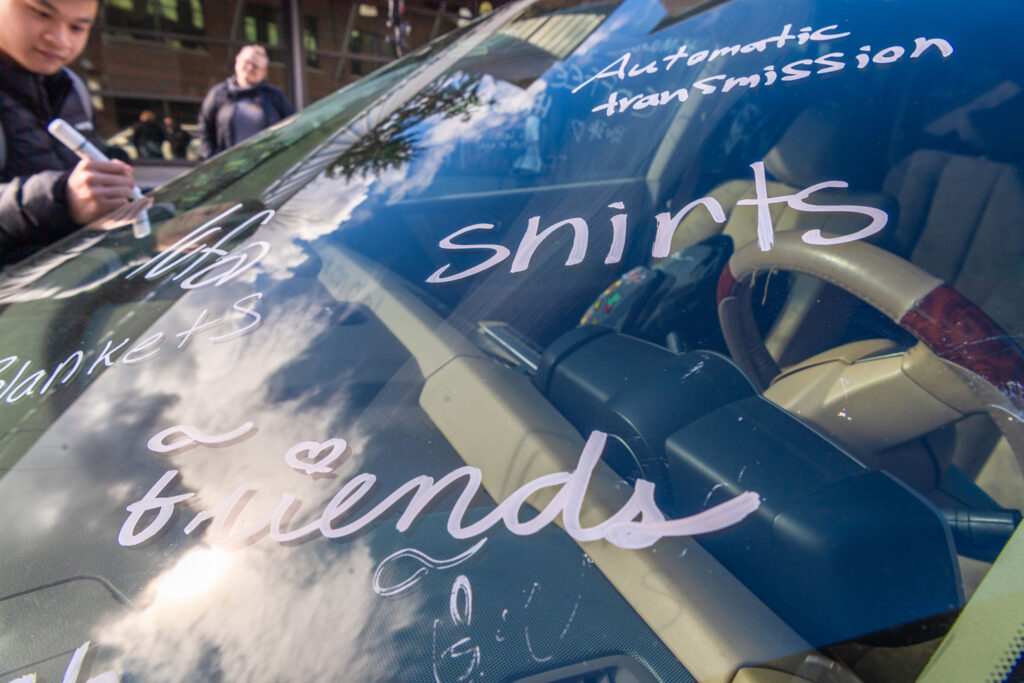
Art to create action
The gaps in equity and privilege between themselves and unsheltered people became increasingly clear to the students as they worked on this research and art project.
“We had a lot of meaningful conversations with people,” Revilla said. “Sometimes we discussed the topic at large, and other times people shared their very personal experiences, such as coming close to being homeless themselves.
“It just goes to show that you never know what people are struggling with. The person sitting next to you in class could be living out of a car. You might not be able to make their situation better, but you can always do your best to make their day better by being kind.”
The students said they hoped their art installation would not only cultivate empathy but also inspire action. To that end, they created and distributed a flier with information about local services and resources for the homeless population.
“Caring about the homeless in our community is a great start,” Revilla said, “but it’s not enough. We need people to turn their compassion into action and get involved. We gave everyone that flier, and we hope that a majority will take the time to read it and learn more about how they can make a difference.
“I think that’s what the heart of our project is about — having empathy for others and showing up for community.”
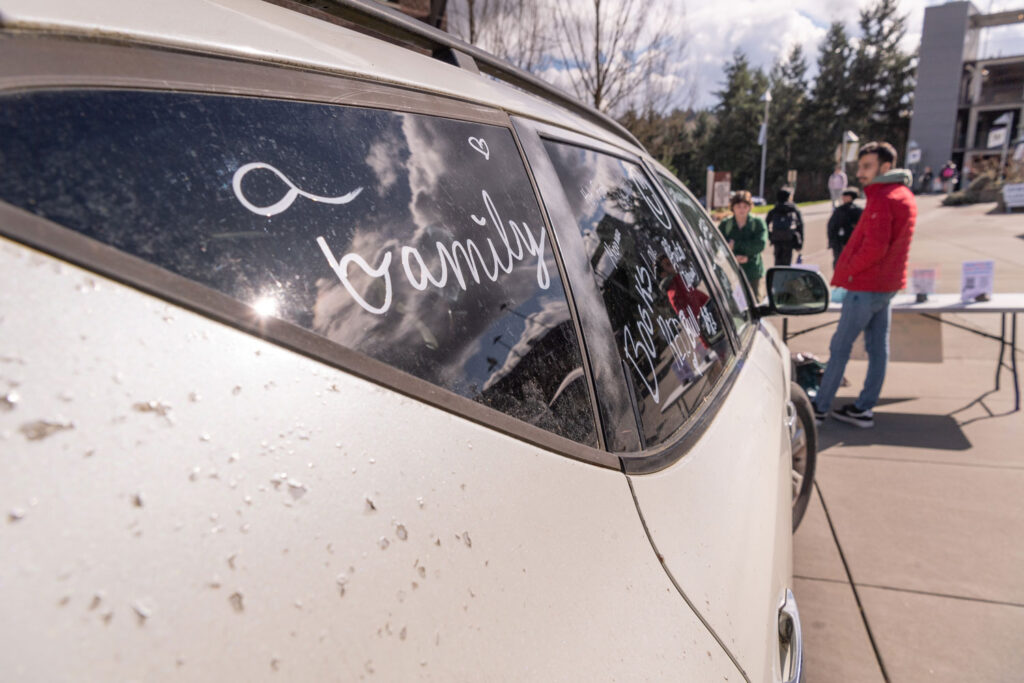
Impacted and involved
When the students first started the project, they had set out to make an impact on the campus community and get people involved in ending homelessness. What they didn’t expect was the impact the project would have on them.
“I think all of us now want to get involved in the cause and, more broadly, to use our degrees to help those in need — no matter what that need may be,” Brand said. “This definitely started out as a project but in the end, it turned out to be a passion and maybe even a purpose.”
And that, noted Carpenter, is the kind of transformative experience art projects can create within people.
“This particular group approached their project very thoughtfully,” he said, “being sensitive to the impact it may have on unhoused students while encouraging reflection from those they interacted with. It was great watching them expand their creative thought processes and social awareness of homelessness while navigating the realities of installation and monitoring of the project.
“It’s exciting to think about the potential long-term impacts both on students and those who participated in the project,” he said. “Something wonderful can happen.”

